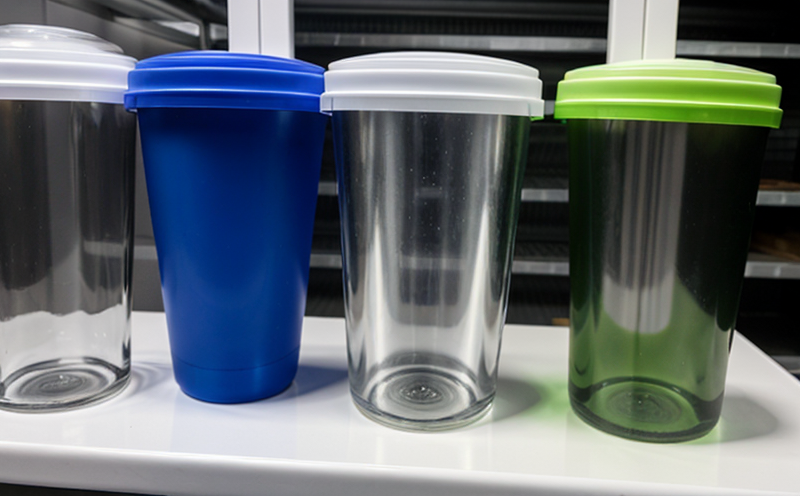ISO 8272-2 Visual Surface Inspection
The ISO 8272 series of standards provides a comprehensive approach to visual inspection for glass packaging. Specifically, ISO 8272-2 Visual Surface Inspection focuses on the non-destructive testing and evaluation of the visible surface of glass containers. This service is crucial in ensuring that glass packaging meets the highest quality standards required by various industries.
The visual inspection serves as a first-line defense against potential defects, which could impact product integrity, consumer safety, and brand reputation. The standard outlines detailed procedures for examining the visible surfaces of glass containers to detect any flaws or imperfections that may affect their performance and appearance.
Visual inspections are performed using various lighting conditions and magnifications depending on the type of defect being sought. This ensures that even minute surface imperfections can be identified and assessed accurately. The service is particularly useful for detecting defects such as cracks, scratches, bubbles, inclusions, and color variations.
The process begins with a thorough examination of the glass containers under specified lighting conditions to ensure accurate detection of any visible surface irregularities. This may involve using transmitted light, reflected light, or polarized light depending on the defect being sought. The inspection is conducted by skilled technicians who are trained in recognizing various types of defects and their implications.
Once identified, defects are categorized based on severity levels defined within ISO 8272-2. This categorization helps determine whether the glass packaging can be used as-is or requires further treatment such as annealing or polishing. The categorization also aids in decision-making regarding product disposition to minimize waste and maximize resource efficiency.
The results of visual inspections are documented meticulously, providing comprehensive records that support quality control processes throughout production cycles. These documents serve multiple purposes including compliance with regulatory requirements, internal process improvement initiatives, and supplier evaluation metrics.
By leveraging advanced lighting techniques and trained personnel, this service ensures consistent and reliable detection of surface defects in glass containers. It plays a pivotal role in maintaining high standards of quality assurance across different sectors where glass packaging is used extensively.
Scope and Methodology
| Aspect | Description |
|---|---|
| Lighting Conditions | The inspection is carried out under controlled lighting conditions to enhance visibility of surface imperfections. Commonly used types include transmitted light, reflected light, and polarized light. |
| Magnification Levels | Different magnifications are employed based on the size of defects being sought. Typically ranges from 1x to 20x magnification depending upon the defect type. |
| Defect Classification | Defects are classified into categories ranging from minor (acceptable) to major (rejectable), which helps in decision making regarding product disposition. |
| Data Documentation | All findings are recorded accurately and systematically, forming part of the documentation supporting quality assurance processes. |
The methodology employed ensures that all relevant aspects of glass packaging surfaces are thoroughly examined. This approach not only adheres to international standards but also provides valuable insights into potential issues early enough in the production cycle to prevent costly rework or scrap.
Quality and Reliability Assurance
The implementation of ISO 8272-2 Visual Surface Inspection contributes significantly to maintaining high levels of quality and reliability in glass packaging. By ensuring that every piece meets the specified standards before proceeding further, this service helps eliminate substandard products from reaching consumers.
Quality assurance through visual inspection plays a vital role in protecting both brand reputation and consumer safety. It ensures that defective items do not enter the market, thereby reducing recalls and associated costs while enhancing customer satisfaction. Additionally, it supports continuous improvement efforts by providing valuable feedback on production processes.
Reliability is another key benefit derived from adhering to this standard. Consistent application of visual inspection methods across different batches guarantees uniform quality standards, which in turn builds trust among stakeholders including suppliers and customers alike. This reliability also facilitates easier traceability throughout the supply chain, making it simpler to identify root causes of any issues that arise.
In summary, ISO 8272-2 Visual Surface Inspection is an essential component of comprehensive quality management systems designed to ensure excellence in glass packaging manufacturing processes.
Environmental and Sustainability Contributions
The commitment to environmental responsibility extends beyond just minimizing waste; it encompasses sustainable practices that promote long-term benefits for both the environment and society. By ensuring high-quality glass packaging through rigorous visual inspections, we contribute positively towards reducing material wastage.
Through our adherence to ISO 8272-2 Visual Surface Inspection standards, we help prevent defective products from entering circulation. This reduces the need for additional production runs or repairs, which in turn conserves resources and energy. Furthermore, by detecting defects early on, we minimize the risk of contaminated materials being used downstream, thus preserving raw material integrity.
Our approach also supports sustainable supply chains by facilitating better communication between suppliers and manufacturers regarding quality expectations. This leads to more efficient procurement practices that prioritize environmentally friendly suppliers who follow best-in-class manufacturing processes.
In conclusion, ISO 8272-2 Visual Surface Inspection is not only about meeting current regulatory requirements but also contributing towards a greener future by promoting sustainable business practices within the industry.





